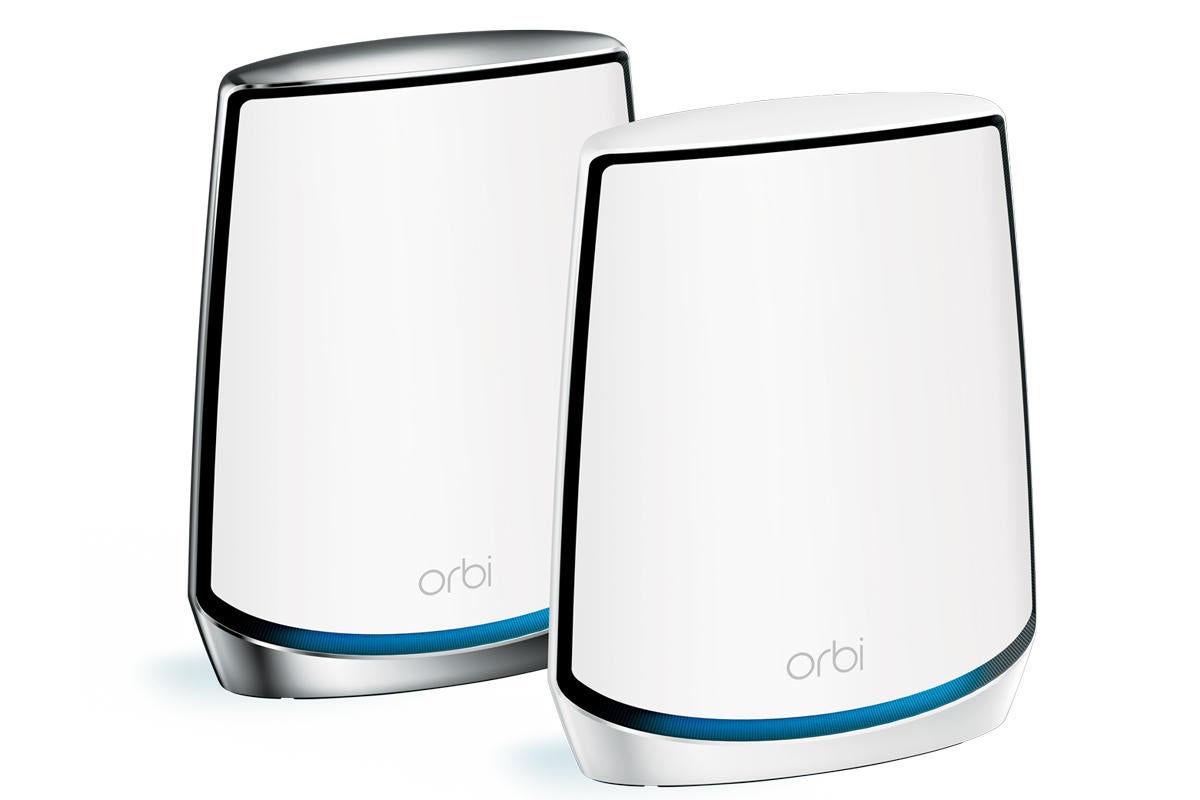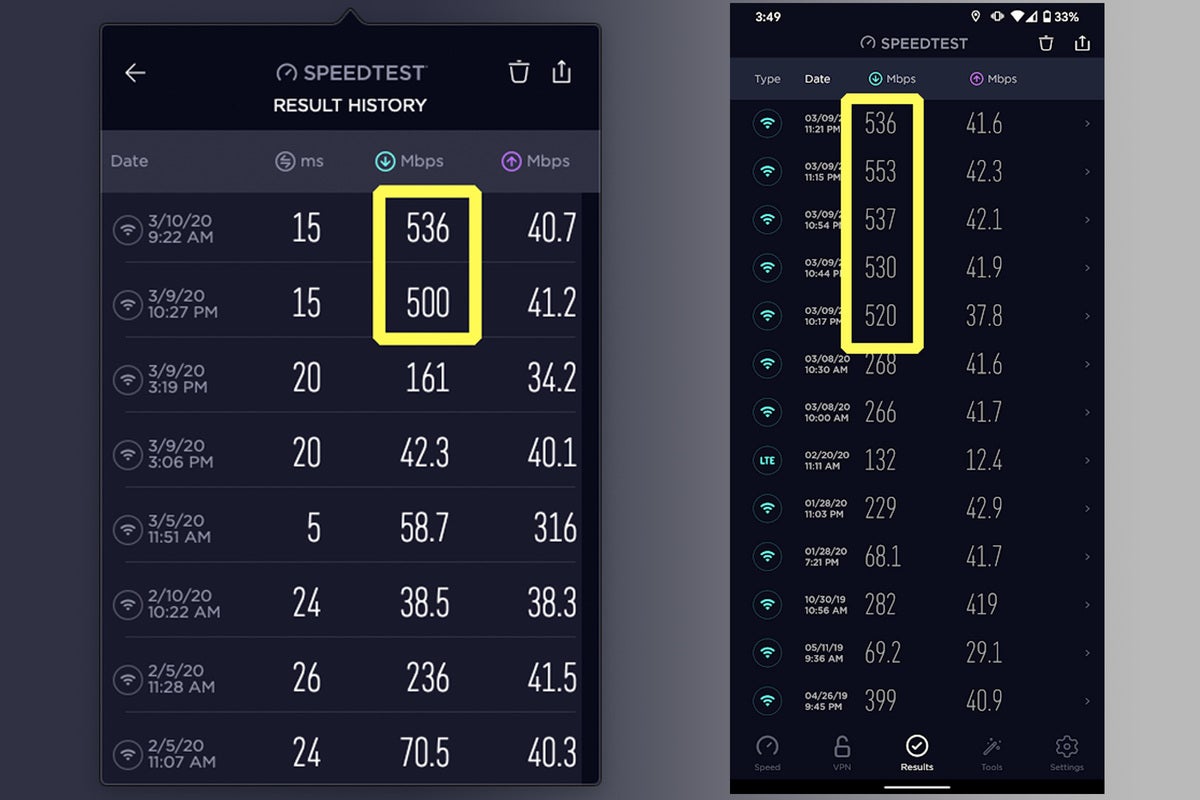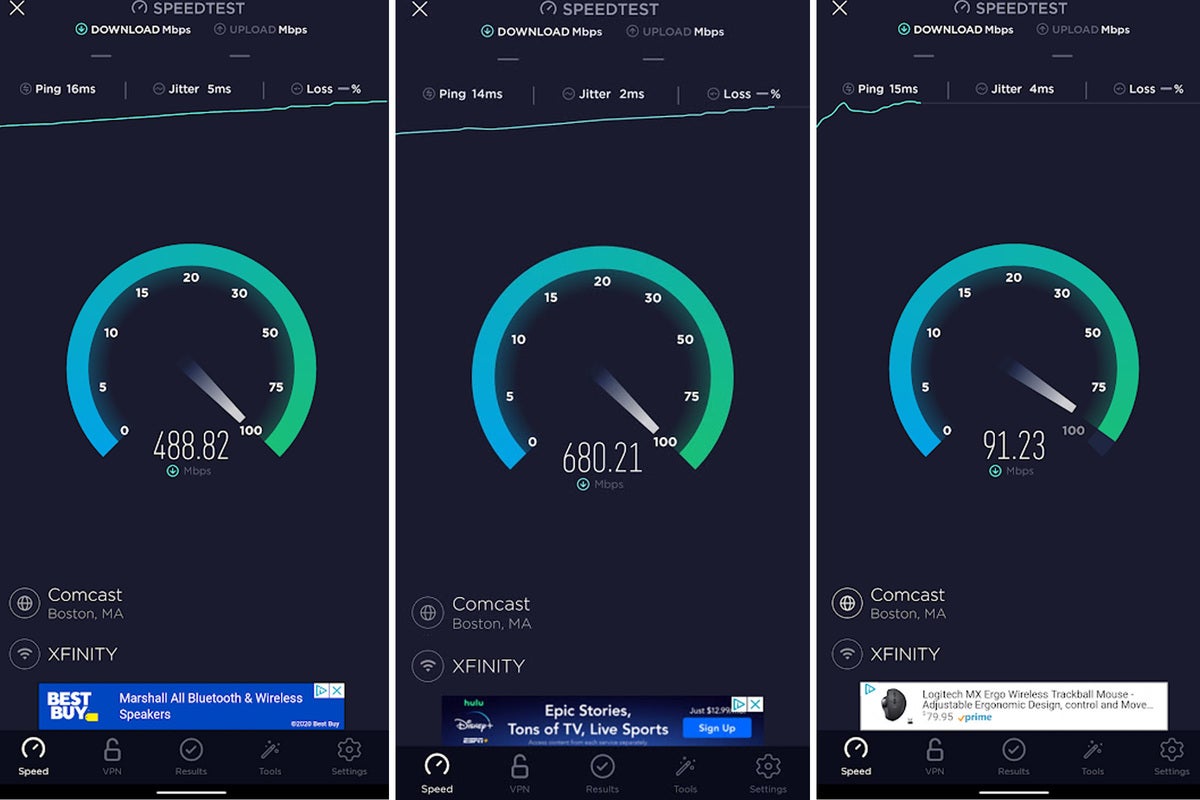Why I spent a bundle on a Wi-Fi 6 router for my work-from-home setup: Speed, speed, speed - trevinopopop1971
Equally a long-time freelancer and work-from-homer, I've owned a lot of routers in my bespeak for the speediest and most pervasive possible WI-Fi. I had the master Apple Drome, followed by the AirPort Extreme, the Linksys WRT3200ACM, and all but new, the Netgear Orbi RBK50.
Update 3/25: Newegg is selling the Orbi WiFi 6 router for $550 nowRemove non-product link , taking $150 off the MSRP with encipher 3FNMDS36. This translation is slightly better than the model I own and wrote about here, with 1.2Gbps of bandwidth on the 2.5Ghz network versus 900Mbps on the Costco model I bought.
Each time I replaced my router, the speeds and coverage boost was of import but relatively muted. The jump from 801.11n (Badger State-Fi 4) to 802.11ac (WI-Fi 5) was discernible, but non monolithic. And upgrading to a mesh router was well-situated, just it didn't deliver a huge leap in coverage over the bridged Airport routers I was using previously (I had configured one Airport as a router, and a 2d as a range extender). When I wanted a speed hike up, I paid for a higher-speed tier from my ISP.
Merely when I hooked up my new Netgear Orbi Wi-Fi 6 system (specifically, the Costco-exclusive Orbi RBK842-1CCNAS, which set me back $550), IT was comparable going from dial-up to wideband. Yes, it's an expensive router. And Netgear's slimly faster Orbi RBK852—available from other retailers—is even pricier. Amazon was marketing it for about $700 at this composition. Both models are tri-band mesh systems consisting of a router and one satellite, but the Costco SKU delivers slightly less bandwidth on its 2.4GHz network: 900Mbps vs. 1.2Gbps.
Most of my client devices consume dual-ring (2.4- and 5GHz) meshwork adapters onboard, and the ones with 2.4GHz-single adapters don't penury spiky bandwidth, so I'm OK with it. The bottom line is that this WI-Fi 6 router is worth every penny. And information technology's not just because of the easy setup and maintenance. On my porch, where I was barely getting throughput of 20Mbps, I'm now getting around 100Mbps. I even tested it by putting the client in a loo with the door out of use and I still screw-topped 100Mbps.
 Netgear
Netgear The Netgear RBK852 is a high-end Wi-Fi 6 enmesh router plus one orbiter.
I'll equal honest, I didn't expect such a boost, as my previous Wi-Fi system was plenty good. I had Netgear's Orbi RBK40 with an extra satellite, and I had no complaints. Quite frankly, I aforethought to return the the Wi-Fi 6 system if my benchmarks showed that it wasn't a lot faster than what I had. Serve to enounce, I'm keeping it. For the first time since I've been draw sprouted WI-Fi routers in my domicile, I'm confident that I won't need to substitute this system of rules for many years to make out, even if I opt to upgrade my internet plan (both Netgear models are equipped with 2.5Gbps WAN ports).
Greenbac that I'm a router hobbyist and not an expert, thusly I'm using the Speedtest app to measurement my connection to the cyberspace. That means the rush along 'tween a waiter and a node on my home network—which is how we more typically benchmark Wi-Fi routers—could be even quicker. If you have a dense net joining, your have Speedtest results might be by artificial means small, because they can't be higher than what your ISP is providing.
Supercharged everything
As with previous generations of Wi-Fi, your client devices will need to accept Wi-Fi 6 adapters to squeeze the most benefit from a Wi-Fi 6 router. Simply I experienced tremendous speed increases even with clients that had older (Wi-Fi 5) adapters onboard. I'm talking doubling—and in some cases—tripling throughput over my local network. My Wi-Fi 6 router enabled Pine Tree State to withdraw a lot better advantage of the gigabit cyberspace service I'm paying my ISP for.
 IDG
IDG The difference between my new Wi-Fi 6 Orbi (the numbers inside the yellow boxes) and the Wi-Fi 5 model is crystal clear.
Nary matter which of my home's main rooms I test in, I'm seeing uniform speed readings of 500Mbps operating room more, using the same devices (outfitted with Wisconsin-Fi 5 customer adapters) that I did earlier. For lesson, my 2016 MacBook Affirmative, which is the same distance from the satellite in my office as it was before, now returns speeds betwixt 500- and 600Mbps, and I can work way faster in my work CMS. With my old router, I'd get 200Mbps with that laptop happening a good day, and around 50Mbps on the average. I'm even topping 500Mbps in my bedroom with the door closed, a location without an Orbi satellite, where I got around 150Mbps before.
Max out in front you need to
My network's execution is also much much consistent. In front, my speed tests would motley greatly depending on where I was in my menage, or if my Word was streaming a video connected his iPad. Wi-Fi 6 not only delivers higher speed, it fundament likewise handle many wireless clients simultaneously. That means my network International Relations and Security Network't as impacted aside things wish video recording streaming or gaming—even if those clients don't have Wisconsin-Fi 6 adapters. Speeds vacillate fairly, but they never dim under 350Mbps close to—which was the peak swiftness with my Badger State-Fi 5 arrangement. And the wired connection (using a CAT6 ethernet cable) to my AppleTV superior out at 900Mbps, about 50-percent higher than the 600Mbps I was acquiring before and very ambient to the actual velocity I'm paying my ISP for.
As we occupy our homes with ache devices—plugs, switches, speakers, bulbs, thermostats, and what have you—Wi-Fi 6's ability to handle lots of wireless clients at once will get along ever much important. I already have 55 wireless clients on my network, and so you can plainly control how virtuoso Netgear's Orbi RBK842 is.
And that's just the topple of the iceberg. Once everything gets upgraded to Wi-Fi 6, I'm confident that my network clients bequeath dead scream. The two Wi-Fi 6-compatible devices that I was able to try—a Samsung Galax S10+ and an iPhone 11—blew away the other wireless clients, with speeds greater than 700Mbps when I was neighbouring the of import router. And I didn't lose much when I wandered. The slowest speeds I recorded with Wi-Fi 6 clients were still higher than 600Mbps, more than than look-alike what I was getting when they were connected to my WI-Fi 5 Orbi system of rules.
 IDG
IDG My Wi-Fi 6 Pel 4 (left) got excellent speeds both near the router and far away on the porch (right), simply IT can buoy't compete with the Wi-Fi 6-enabled Galaxy S10 (center).
But the biggest reason to plunk down a bunch of pelf along a Badger State-Fi 6 router isn't for today's speeds, devices, and manipulation cases; it's for tomorrow's. Even if your ISP can't deliver gigabit broadband now, a modern home needs a router that can quickly move loads of information from lots of clients inside it. And broadband providers will before long be able to offer very high-speed internet precisely about anywhere, whether information technology be via cable, 5G, or some spic-and-span tech we haven't persuasion of. As well, no one ever complains that something is too fast.
A Wi-Fi 6 router is arsenic close to future-proof as some tech you bathroom bribe. Yes, information technology will cost many than a Wi-Fi 5 model. And yes, Wi-Fi 6 routers will be cheaper in the future. Only the performance of a high-end Wi-Fi 6 router compared to a high-stepped-end Wi-Fi 5 router completely justifies that.
Whether you'ray a cord-cutter, a work-from-homer, or a parent with kids World Health Organization like to stream Fortnite videos terminated Twitch, your next router should have a Wi-Fi 6 label. I mean, If you're planning to spend a thousand bucks happening your next smartphone anyway, a Wi-Fi 6 router is the best possible fuel for IT.
Source: https://www.pcworld.com/article/398881/why-i-bought-a-wi-fi-6-router.html
Posted by: trevinopopop1971.blogspot.com


0 Response to "Why I spent a bundle on a Wi-Fi 6 router for my work-from-home setup: Speed, speed, speed - trevinopopop1971"
Post a Comment